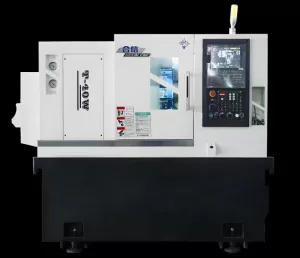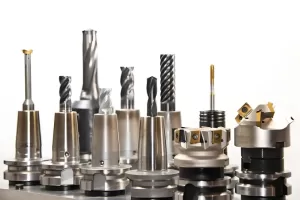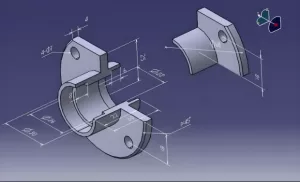January 16, 2025
Exploration of CNC lathe machining process
Exploration of the CNC lathe machining process
CNC machining technology is based on mechanical production and industrial processing based on digital processing methods, itself has a strong modernization characteristic, not only can reduce labor costs and labor pressure, but also significantly enhance the scientific and rational industrial processing system.

CNC lathe machining process is the core link to ensure product quality, improve productivity, and reduce costs. Through reasonable process design, it can maximize the potential of CNC equipment, and bring economic benefits and competitive advantages for enterprises.
1. the application of CNC lathe machining process system and detail analysis
(1)Selection of lathe
CNC lathe is suitable for the following types of machining parts: small batch production of parts or new products in the trial production of parts; the shape of the parts and the wheel is more complex, for the machining of higher precision requirements: through the ordinary machine tool processing will cost a lot of time and cost; the need for multiple improvements and upgrades; the parts of their price is high, in the process of machining does not allow the occurrence of the situation of scrapping; the parts of production Short cycle time and urgent need for production.
CNC lathe processing can further enhance the processing efficiency, and reduce unnecessary waste of resources, so in the process of selecting a CNC lathe, can be combined with the parts of their own processing needs as well as the characteristics: to determine the choice of ordinary lathe processing or CNC lathe processing, to ensure that the processing of the comprehensive quality.
(2)Determination of processing methods and programs
The choice of processing methods needs to be combined with different parts of their characteristics to analyze, ensure that the processing accuracy and surface roughness meet the actual requirements, and consider the economic benefits of processing and production efficiency, to understand the operation of the production equipment itself. The processing program determines the need to adhere to the fulfillment of the following principles: First: the precision requirements of the parts must be higher than the surface machining requirements, usually to the surface roughing, semi-finishing, finishing, and other processes.
Comprehensive these processing needs, rational screening of the quality standards of the processing program, analyzing the situation of CNC lathes, understanding the gross bad conditions, and improving the scientific nature of the processing.
To ensure that the machining program to determine to meet the actual application requirements, simultaneously in line with the operating characteristics of the CNC lathe itself.
(3)Division of processing steps
1. Part clamping and positioning method as the standard for division. To parts clamping and positioning as the standard of process division, need to consider the actual requirements of each part of the basic structure type analysis of surface processing technology system, in the process of processing also need to consider different positioning methods.
When machining a part’s external shape conventionally, the internal shape is usually positioned, and when machining the internal shape of a part, it is divided by the external shape positioning.
2. Divided by the degree of fine processing as a standard. Combined with the specific machining accuracy, deformation, stiffness, and other factors for the division of work processes, usually roughing or fine machining as the basis for division, first roughing, then finishing.
Different types of CNC lathes or tools can be selected in this process. Generally speaking, an installation period needs to ensure that each part and surface machining is completed at once, to avoid excessive tool changes, but also to further reduce the time of the empty stroke operation which is the main factor to reduce positioning errors and improve the accuracy of machining.
3. Divided by processing technology as a standard. For a part of the parts need to be processed through a variety of machining processes, for example, both milling plane and boring surface parts, can be milling plane first after boring processing.
By dividing the work steps according to this method, the machining accuracy can be improved. Because the cutting force is large when milling a flat surface, the parts are prone to deformation. By milling the plane first and then boring the hole, the deformation phenomenon can be restored and the problem of accuracy degradation caused by the oil-electric type can be reduced.
4. Divided by tool as a standard. A part of the CNC lathe table rotation time is less than the time of the tool change, then you can use different tools for the standard division of the process, which can reduce the number of times the tool changes, but also can improve the overall processing and operational efficiency.
(4)Mounting of parts and selection of fixtures
Installation of parts needs to adhere to the design of the benchmarks, process benchmarks, and programming calculations of the benchmarks for unified analysis, to ensure that the parameters are consistent to provide a fundamental guarantee for subsequent processing, to further reduce the number of clamping, and to strive for completion. Through the automatic control function of the CNC machine tool itself to adjust the details, and further reduce the degree of manual intervention, can enhance the accuracy of processing.
The selection of fixtures needs to be analyzed in conjunction with specific machining characteristics, on the one hand, to ensure that the fixture coordinate direction and the coordinate direction of the machine tool is relatively unchanged, on the other hand, we should do a good job in the coordination of the parts and detail control, mainly based on the machine tool’s coordinate system dimensions. Also combined with different production scenarios and needs to be adjusted.
If the parts processing batch is small, you can use a combination of fixtures or adjustable fixtures for processing, to further shorten the time used in production and processing, but also effective cost savings; and the need for batch production, the use of special fixtures.
Reliability and speed must be ensured during parts loading and unloading to reduce downtime on the CNC lathe. The series of parts on the fixture must not interfere with the machining operation of the machine, so the fixture must be kept open to avoid interfering with tool travel.
(5)Tool selection and control of cutting volume
In the selection of tools to choose high-quality materials, the most common material is carbide. In precision machining, you can choose ceramic and diamond tools with stronger resistance, and rationally adjust the parameters of the tool.

The selection of the cutting volume should be adjusted to the different machining methods and requirements.
For example, roughing process for processing requirements and standards is not high, and usually considers productivity; the semi-finishing and finishing process to ensure quality first, needs to consider the economic benefits of cutting rate and processing costs. The depth of cut should be determined in conjunction with the CNC lathe, tool, and workpiece stiffness analysis.
Further reducing the number of feeds is the best, one time to complete the removal, which can greatly improve the machining efficiency. Cutting speed adjustment can be combined with productivity and different machining accuracy control; determine the adjustment of the feed rate, combined with the surface machining accuracy requirements and roughness requirements for control, but also need to consider the nature of the parts and tool materials.
For example, under finishing conditions, when the requirements for surface roughness are high, the feed rate should be appropriately reduced. The maximum feed rate needs to be set as standard in conjunction with the stiffness of the machine tool and the operational performance of the feed system, taking into account the pulse equivalent of the CNC itself.
(6)Determination of processing routes
Machining route determination needs to take into account the surface roughness of the part, the machining accuracy of these conventional standards, and at the same time to ensure that the numerical calculation has a higher efficiency, to reduce the air travel to reduce the overall shortening of the machining route.

Process route determination process, combined with the part machining allowance, tool rigidity, and machine performance to determine whether it is necessary to carry out a tool walk, or need to be cut through some tool walk.
The different types of CNC lathes also determine the processing route, for example, the CNC milling process contains reverse milling, milling, and processing two ways, which can be combined with their respective operational needs for targeted adjustment.
Second, the importance of the CNC lathe machining process is reflected in the following aspects
1. Machining accuracy and quality
CNC lathe machining can provide high-precision parts machining, which is difficult to realize by traditional manual machining. Through reasonable process design, it can ensure that the size, shape, and surface quality of the machined parts meet the design requirements and reduce errors.
2. Improving productivity
A reasonable machining process can optimize the machining steps, reduce ineffective processes, and improve the operating efficiency of the CNC lathe, thus shortening the machining time and increasing the output. This is especially important for mass production.
3. Cost reduction
By scientifically planning machining sequences and selecting the right tools, raw material waste, and machine tool wear can be minimized, reducing manufacturing costs. In addition, process optimization reduces unnecessary downtime and breakdowns during machining.
4. Enhancing security
A proper process flow can reduce the number of accidents during machining and protect both the machine and the operator. For example, tool damage or material splash can be avoided by setting proper cutting parameters.
5. Adaptation to complex parts processing
CNC lathes are particularly suitable for processing complex shapes and difficult parts. A well-developed machining process can take full advantage of the multi-axis linkage capability of CNC machine tools to achieve precise machining of complex geometric structures.
6. Standardization and reproducibility
The CNC machining process allows standardized production by ensuring consistency of each part through program control and avoiding human error. This is especially critical for parts that require high consistency.
7. Support for diversified material processing
For different materials (e.g. metals, plastics, or composites), a suitable machining process ensures the machining results and avoids problems such as material deformation, cracking, or machining difficulties.
8. Environmentally friendly
Optimized processing reduces energy consumption and waste, lowering the environmental burden while increasing resource efficiency
Conclusion
The core of the CNC lathe machining process lies in improving machining accuracy, enhancing efficiency, reducing costs, and ensuring safety. It ensures consistency and standardization of parts, adapts to the processing needs of complex parts and diversified materials, and at the same time supports energy saving and emission reduction to realize sustainable production. Reasonable machining process design is an important foundation for enterprises to improve product quality, optimize resource utilization, and enhance market competitiveness.